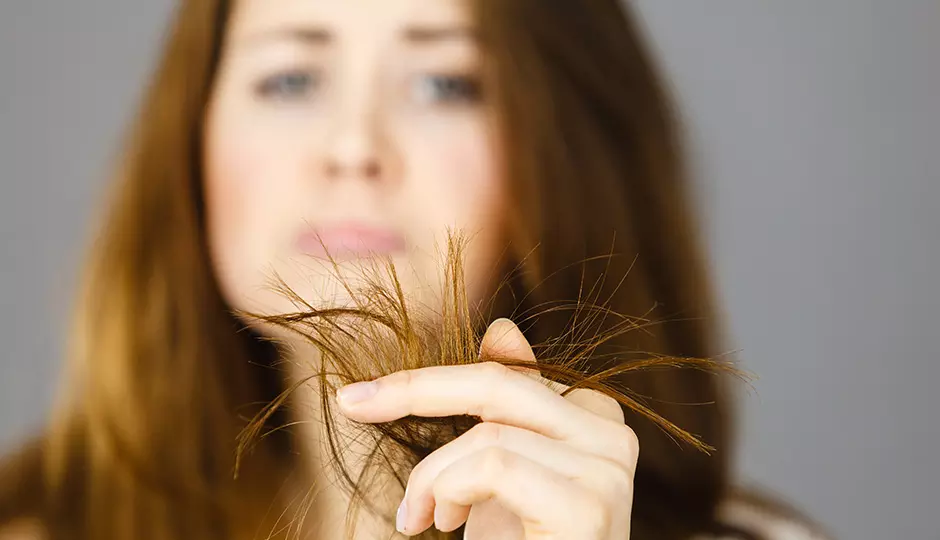It's not uncommon to find a few loose strands of hair in your brush, the drain, or on your clothing and bedding. If you are noticing more loose hair than usual, you may be concerned that you are experiencing hair loss. However, what you may be seeing could be normal hair shedding rather than hair loss, and there is a difference.
The Hair's Natural Growth Cycle
The growth of your hair follows a predictable pattern known as the natural hair growth cycle. The hair growth cycle consists of four distinct phases:
- Anagen: The Anagen phase or growing stage may last from two to seven years.
- Catagen: During the Catagen, which lasts for about ten days, the hair follicle begins to shrink, and the hair detaches from the follicle.
- Telogen: During the telogen or resting phase, typically lasting about three months, the hair is no longer growing or receiving nutrients but only resting while a new strand of hair begins to grow.
- Exogen: The exogen phase is when the old hair finally sheds and is replaced by new hair. Typically, the average person sheds about 100 to 150 of these hairs every day.
What is Hair Shedding?
Hair shedding is a normal part of the hair's natural growth cycle. The average person has around 100,000 hair follicles and strands of hair on their head, and it's normal to lose 100 to 150 strands of hair every day. The loss of this relatively small amount of hair will usually go unnoticed except for the hair on your brush and is quickly replaced by new hair growth. Several factors can interfere with the hair's growth cycle and cause excessive hair shedding.
Two of the most common causes of excessive hair shedding are:
- Stress: High-stress levels are a significant contributor to excessive hair shedding. During periods of stress, the body produces more androgens, hormones that regulate the hair growth cycle and your hair follicles.
- Hormonal imbalance: Your hormone system is finely balanced, and a slight change in any one hormone can severely impact the system. A hormonal imbalance can disrupt the hair's growth cycle and force more follicles into the exogen or shedding phase.
Excessive hair shedding typically stops on its own when the cause is no longer present. For instance, if you are dealing with a highly stressful situation or a hormonal imbalance, your hair's growth cycle will return to normal when the stress or hormone imbalance is corrected.
What is Hair Loss?
Unlike shedding, hair loss occurs when something interferes with the hair follicle's ability to grow healthy hair. Hair loss, also referred to as alopecia, tends to develop gradually, and without treatment, the hair follicles may become permanently damaged, leading to irreversible hair loss. While hair loss is common for both men and women, there are several types, each with different causes and symptoms.
- Alopecia areata is a sudden hair loss that often starts with one or more circular bald patches that may overlap.
- Anagen effluvium is a condition that affects the hair's growth during the anagen or growth stage of the hair cycle.
- Androgenetic Alopecia, a hereditary condition, is the most common type of hair loss. Androgenetic alopecia is often referred to as male or female-pattern baldness.
Hair Loss vs. Hair Shedding and How to Tell the Difference
It's often challenging to differentiate hair loss and hair shedding. It's normal to find some hair in your brush or the shower drain, but if there seems to be more than usual, it could be excessive hair shedding or the beginning of permanent hair loss.
Most types of hair loss occur gradually, and while common for both men and women, you don't have to live with hair loss. Whether you are dealing with excessive hair shedding or a hair loss condition, solutions are available. At New Image Hair Clinic, we are hair experts. Our team of professionals can help you determine if you are experiencing excessive hair shedding or hair loss and recommend solutions such as laser hair therapy, extensions, wigs or hair restoration systems. To learn more about hair loss vs. hair shedding and how to tell the difference, contact us today and schedule your FREE initial consultation.



